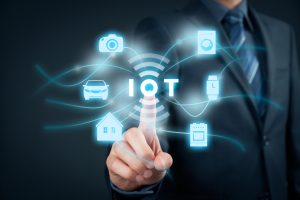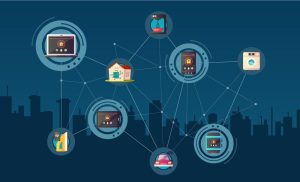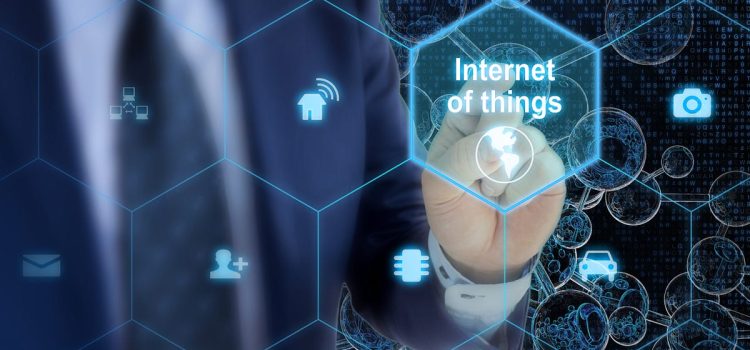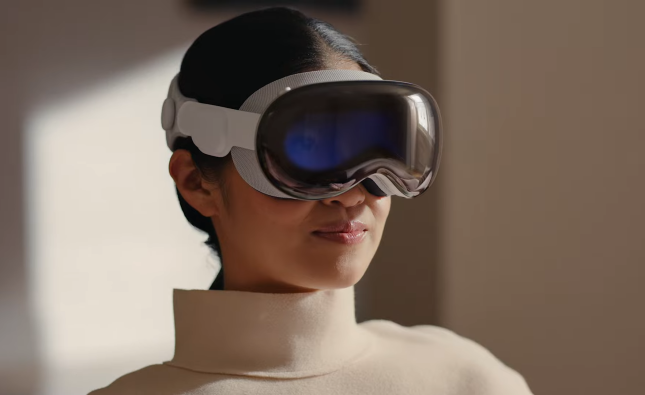
The Internet of Things (IoT) has been steadily evolving over the years, and in 2024, we are witnessing some groundbreaking advancements that are changing the way we live, work, and interact with technology. The interconnected world of devices and systems, from smart homes to connected cars and smart cities, continues to grow and evolve, offering innovative solutions to both individuals and industries alike. In this article, we will explore the latest developments in IoT, focusing on areas like smart home automation, connected vehicles, AI-driven IoT insights, and the rise of IoT in agriculture and healthcare, along with their benefits and real-world applications.
Latest Developments in the Internet of Things 2024

One of the most significant updates in the IoT ecosystem is the release of Matter 1.4, the latest version of the smart home automation standard. This standard aims to enhance the interoperability of IoT devices by making them work seamlessly across different platforms, whether from Amazon, Google, Apple, or other tech giants. With Matter 1.4, smart home devices can communicate more effectively, ensuring that homeowners experience smoother integration and a more reliable smart home setup.
For instance, this update introduces enhanced multi-admin features, allowing multiple platforms to control smart devices simultaneously. This feature is especially useful for households where family members may use different ecosystems (e.g., Apple HomeKit and Amazon Alexa). The introduction of new device types for energy management, such as solar panels, home batteries, and heat pumps, further expands the possibilities of a connected home. Homeowners can monitor and control their energy consumption in real time, significantly contributing to energy conservation.
IoT Smart Home Devices: Interoperability Standards
The evolution of smart home automation with the Matter standard is one of the key highlights in the IoT industry. Previously, consumers often faced the challenge of dealing with incompatible devices from different manufacturers, but with Matter 1.4, this issue is being resolved. Whether you’re controlling your lights, thermostat, security system, or appliances, Matter enables a unified experience across various ecosystems.
Benefits of these interoperability standards include:
- Seamless Integration: You can mix and match smart home devices from different brands without worrying about compatibility.
- Improved User Experience: Consumers no longer have to invest in devices from a single ecosystem, allowing for more freedom of choice.
- Energy Efficiency: Advanced energy management tools in smart home devices help reduce unnecessary energy consumption, saving homeowners money on utilities.
Connected Cars: The IoT Revolution on the Road
The connected car ecosystem is rapidly evolving, with more vehicles becoming part of the Internet of Things. Connected vehicles IoT technology and applications offer numerous advantages, from improved vehicle maintenance to enhanced safety features. For example, Jaguar and Vodafone recently showcased connected cars at the Wimbledon tennis tournament, demonstrating the use of real-time GPS, high-speed internet, and data-sharing capabilities.
Benefits of connected vehicles include:
- Improved Maintenance: IoT-enabled vehicles can send alerts about maintenance needs or malfunctions before they become major issues, helping drivers avoid costly repairs.
- Safety Features: Real-time data sharing allows for enhanced safety, with connected cars alerting each other about traffic conditions or accidents.
- Increased Driver Comfort: By integrating IoT technologies such as voice assistants, autonomous driving capabilities, and entertainment systems, connected vehicles enhance the driving experience.
Example: Consider a situation where your connected car receives real-time traffic updates and reroutes you around a traffic jam, saving you time and fuel. This is just one of the many examples of how connected vehicles are transforming the way we travel.
AI Integration in IoT Devices
Another key development in the IoT space is the integration of Artificial Intelligence (AI) into IoT systems. Companies like Archetype AI are pushing the boundaries of AI and IoT by developing intelligent models capable of interpreting sensor data in real time. These AI-driven IoT insights are being applied across multiple industries, from logistics to healthcare.
For example, AI can analyze data from IoT sensors to predict the failure of a machine before it happens, reducing downtime in manufacturing plants. In the healthcare industry, AI and IoT integration is enabling smarter monitoring systems that track a patient’s vital signs in real time, providing healthcare professionals with accurate, up-to-date information about their condition.
Benefits of AI integration in IoT include:
- Predictive Maintenance: AI can predict when a device or machine will fail, allowing for timely repairs and minimizing downtime.
- Real-Time Decision Making: AI enables devices to make decisions in real time, improving the efficiency and effectiveness of IoT systems.
- Improved Accuracy: AI improves the accuracy of data analysis, leading to more reliable insights and actions based on sensor data.
Smart Farming Solutions with IoT

The agricultural sector has greatly benefited from IoT solutions, which have helped to revolutionize smart farming. By leveraging IoT devices such as soil moisture sensors, weather monitoring systems, and drones, farmers can make more informed decisions that improve crop yields and reduce resource waste.
Smart farming IoT solutions for crop management include:
- Soil Moisture Monitoring: IoT sensors in the soil allow farmers to track moisture levels and water crops only when needed, optimizing water use.
- Precision Agriculture: IoT sensors and GPS technologies help farmers to apply fertilizers, pesticides, and herbicides more precisely, reducing costs and environmental impact.
- Weather Forecasting: IoT weather stations can provide hyper-local weather data, allowing farmers to make better decisions regarding planting and harvesting times.
For example, a farm in the Midwest United States uses IoT-enabled weather stations to collect real-time weather data. This data is then used to optimize irrigation schedules, resulting in a significant reduction in water usage while maintaining crop health.
The Role of IoT in Healthcare
IoT healthcare applications for patient monitoring are transforming the healthcare industry. Wearable devices, such as smartwatches and fitness trackers, provide real-time data about an individual’s health, including heart rate, sleep patterns, and physical activity levels. This data can be transmitted to healthcare providers, allowing them to monitor patients remotely and intervene when necessary.
Benefits of IoT in healthcare include:
- Remote Patient Monitoring: IoT devices enable doctors to track patients’ vital signs remotely, reducing the need for frequent in-person visits.
- Better Health Outcomes: Real-time data enables quicker responses to medical issues, improving patient outcomes.
- Cost-Effectiveness: By reducing the need for hospital visits and improving efficiency, IoT solutions can lower healthcare costs for both patients and providers.
Challenges and Future of IoT
Despite the rapid growth and adoption of IoT technologies, there are still challenges that need to be addressed. IoT security and data privacy concerns remain significant hurdles, as more devices connect to the internet and collect personal data. Ensuring that these systems are secure and that data is protected will be crucial for the continued success of IoT.
Moreover, the need for standardized protocols across different devices and industries is another challenge. As more devices enter the IoT ecosystem, ensuring they can communicate with one another seamlessly is critical for achieving full interoperability.
Conclusion
The Internet of Things continues to evolve, bringing significant improvements to industries ranging from smart homes and connected cars to agriculture and healthcare. As more devices become interconnected, the potential for IoT to create smarter, more efficient environments is limitless. By addressing challenges like security and standardization, we can unlock even greater opportunities for innovation in the years to come.
With continued advancements in AI integration, smart farming, and IoT healthcare applications, the future of IoT looks bright, offering a more connected and efficient world for all.










